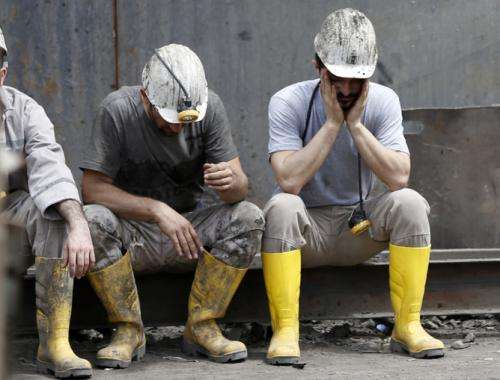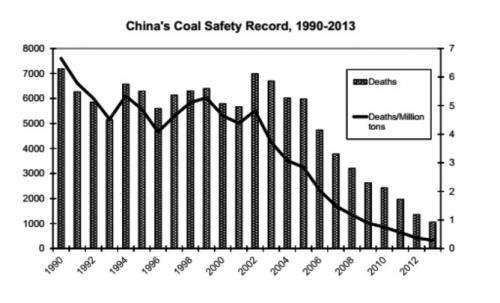China has shown that mine safety can be improved rapidly

The Soma coal mine tragedy in Turkey has again brought the issue of coal mining safety to the fore. With by far the largest coal industry in the world, accounting for half of global production, the Chinese experience has some lessons to offer Turkey in the wake of the Soma disaster.
For many years the toll of miners' lives in China attracted significant amounts of media attention. But the situation, while still serious, has shown great improvement in recent years and shows that reducing casualties in coal mining is possible.
Up to the early 2000s, China's coal safety record was an international embarrassment and a serious concern throughout Chinese society. During the 1990s, around 6,000 Chinese miners a year, or five people for every one million tons of coal produced, died in the mines. This compared to only 130 deaths, or 0.5 people for every million tons in India, not to mention the much higher safety levels of other big coal producers such as the United States or Australia.
But in recent years, the situation has dramatically improved, with deaths falling to just over 1000, or 0.3 people for every million tons in 2013. This is still a large number of casualties from coal mining, but given the massive expansion of the industry, still a great achievement.
As an emerging power that is similarly reliant on coal, Turkey can look to China to make improvements to its mining culture going forward.
Explosions underground
A number of factors contributed to the earlier high fatalities in China. The great majority of Chinese coal was, and to a lesser extent still is, mined from underground mines. These are inherently more dangerous than open-cut mines (though that is neither to deny the potential for reducing underground fatalities nor to gainsay the serious environmental implications of open-cast mines).

In particular failure to remove gas from underground mines or to reduce the amount of coal dust in them is often the cause of the largest disasters. In 2005 China experienced three explosions each costing over one hundred lives, and the recent disaster in Turkey originated in an explosion, trapping miners below ground.
The Chinese government's almost exclusive focus on economic growth relegated safety and the necessary investments in safety to a lower priority. At the same time, even the large mines faced serious cost pressures and safety was easy to economise on. Large numbers of small rural mines, mostly using relatively primitive technology, operated largely without supervision and often bribed regulators when they were inspected; their record was by far the worst.
Many of these features began to change in the early 2000s. More coal began to be mined by open-cast methods, especially in the newly developing areas of Inner Mongolia. The leadership of Hu Jintao and Wen Jiabao (who started life as a geologist) started to put more emphasis on social problems, including coal safety, and passed a series of measures forcing mining companies to invest in equipment to remove gas from the mines.
At the same time booming coal prices helped fund these investments. The government also made accidents more expensive for mining companies by increasing the amount of compensation they had to pay for casualties under their watch.
Small mines shut
China also closed or consolidated small rural mines – often in the face of local governments and populations who depended on them for income and employment. International expertise was also welcomed, with foreign mine safety experts like New Zealander Dave Feickert playing prominent roles.
Improvements in China were also the result of social factors like a tightening of the labour supply, which had previously seemed limitless. This labour squeeze was first felt in the export-oriented factories on the coast. In mining areas, parents are unwilling to allow their only son to risk his life in dangerous pits. Even in the early 2000s, coal experts were asking who would mine China's coal in 20 years time?
China's story suggests that there is no single fix, but numerous improvements in standards and safety are possible in the coal mining industry. Of course the immediate factors are technological and organisational, such as the removal of gas or more broadly a shift to open-cut mines.
But strong commitment from the state, and a willingness to trade some growth in output for improved safety, is clearly also necessary. Businesses must be presented with incentives for safe production, while having the ability to make the necessary investments. Finally, those incentives will be much greater if the workers have more say and more bargaining power, as happens when the supply of labour begins to decline.
Provided by The Conversation


















